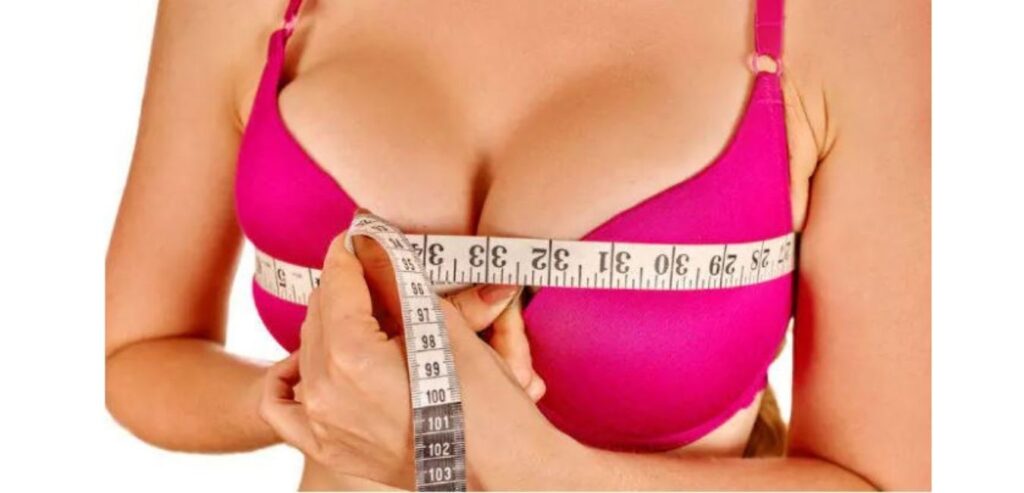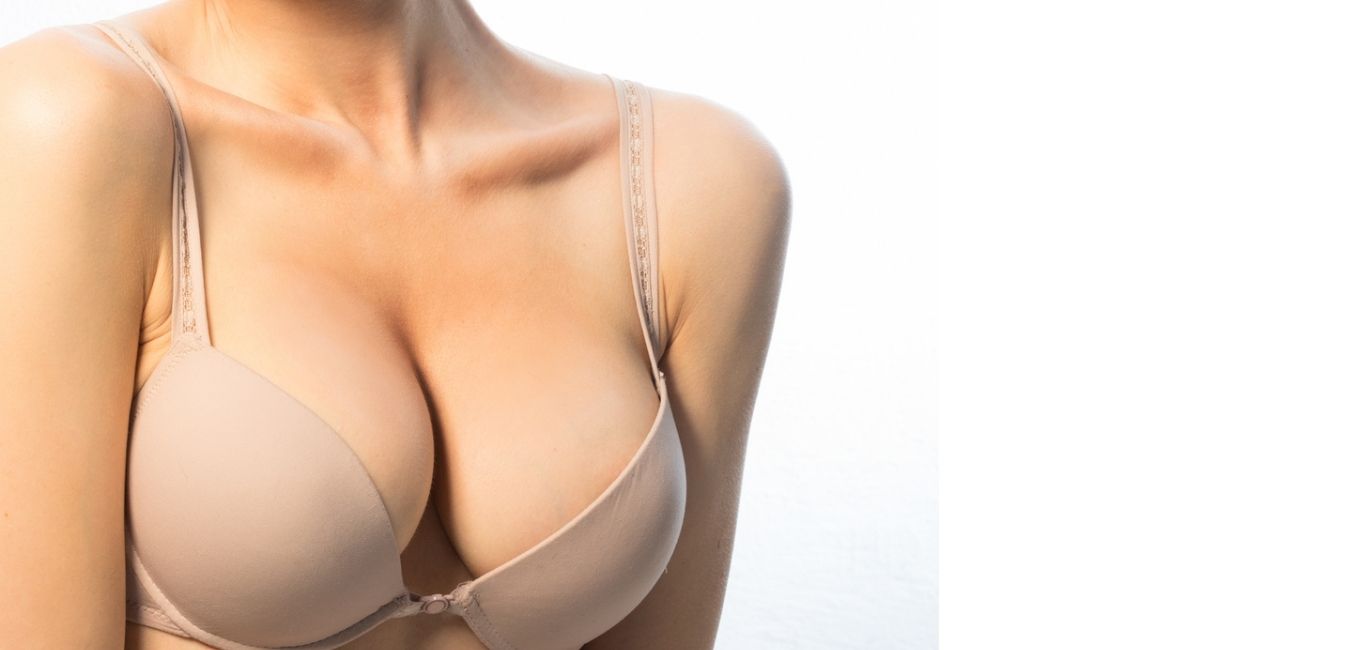Have you noticed that your breast is uneven? Are you worried about why one of your breasts is bigger than the other? Here are the causes and how to treat them.
Breast size asymmetry is a very common concern among women and teenage girls. Breast asymmetry can be defined as a difference in size, position, and form of the breasts and it is very common among women.
More than half of the women out there have uneven breasts. The condition where the breasts are slightly different from each other, known as asymmetry, is more noticeable during adolescence or puberty.
In most women, the left breast is usually slightly larger than the right. During the development, the size of the breasts evens out eventually. Very few women have perfectly symmetrical breasts. A slight difference in size — up to 20 percent — between the right and left breast is normal. Breasts can vary in size or shape for several reasons—genetics, pregnancy, breastfeeding, and certain medical conditions. Sudden changes are not, though, and are reasons to talk to your doctor.
A mammogram can be used by doctors to measure the symmetry of the breasts. Before we tell you about the reason for the asymmetry, let us understand the anatomy of the breast.
Breasts, which are also called mammary glands, are glands with the base at the chest wall. The breast weighs three to four kilos. They are composed of several tissues, mainly glandular tissue and adipose tissue. Breasts also contain 12 to 20 lobes and each one of them has one duct that opens at the nipple.
The breast tissue changes due to hormonal changes during your period and pregnancy. When you are ovulating, your breasts feel more sensitive and fuller. Breasts development begins during puberty and sometimes the breasts develop differently from one another.

Here are some of the reasons for breast size asymmetry.
1. Natural variation in the anatomy
Your body is not 100% symmetric and it is no big deal. During puberty, your body undergoes many changes due to hormones, and the development of the breast is one such change. The uneven size of the breast is due to the natural growth variation during puberty. The variation is not very visible. You should consult your doctor if the breasts grow uneven after your adolescent period.
2. Pregnancy
Breasts may become uneven during pregnancy. Breasts might grow larger and sometimes lopsided as the body prepares for breastfeeding. Hormone changes also play a role.
During breastfeeding, breasts may not be the same shape or size. This is especially true if your baby favors nursing, or feeding, on one side. As long as your child is getting enough breast milk and growing at a steady rate, you don’t need to worry about uneven breasts.
3. Due to a medical condition called juvenile or virginal hypertrophy
Juvenile hypertrophy occurs when one breast grows much larger than the other. It’s a rare condition and the cause is unknown. Researchers believe it’s related to hormone sensitivity or hormone production. The hypertrophy of the breast should be evaluated by a doctor.
According to research published in 2017, this condition appears during puberty. Two factors contribute to the condition. First, extreme breast growth lasts for six months. That’s followed by a longer period of slower but continued breast growth. Surgery can correct juvenile hypertrophy.
The condition can cause psychological and physical problems, so you should consult your doctor in case you see sudden changes in your breasts.
4. Due to underlying fibroid-non-cancerous tumors
Asymmetry of the breasts can be caused by underlying fibroids-non-cancerous tumors. Ask your doctor for a checkup if you see sudden changes in the shape or size of your breasts.
5. The Curvature of the spine or alignment of the body
Your body looks perfect when the fat and muscles are evenly distributed and the body has the perfect alignment. However, several of our habits affect this alignment. The sleeping position, posture, stress, and injuries lead to a change in the alignment of the body. And it can cause the overdevelopment of one of the breasts.
6. Due to breast cancer
This one is a serious problem. It is a problem if you had even breasts and they became uneven during adulthood. Rush to your doctor, if you were blessed with perfect twin breasts but are now growing asymmetrical. The sudden change in size and form of the breast during adulthood can be a sign of breast cancer, so consult with your doctor immediately.
7. Hypoplastic Breasts
Hypoplastic, or underdeveloped breasts, can be small, thin, spaced far apart, or very uneven. The areola (the area around the nipple) may appear large too.
You usually can’t identify a cause for breast hypoplasia. Hormones sometimes play a role. But it can also happen because of an injury or a medical condition.
For example, there’s a reported case of a teenage girl who had one breast smaller than the other after normal breast development. In her case, it happened after she had an infection called mononucleosis.
8. Atypical Ductal Hyperplasia
Atypical ductal hyperplasia (ADH) is a condition that affects your breast tissue cells. It occurs when the milk ducts in your breasts have excessive growth. ADH isn’t cancer, but it may increase your risk of getting cancer in the future.
In this condition, more cells line the duct than usual. Some of these cells are irregular in shape and size. ADH can lead to benign (non-cancerous) lumps in the breast that affect its appearance.

When Should I Worry About Uneven Breasts?
Uneven breasts aren’t usually something you need to worry over. That said, researchers are finding that uneven breasts may be a risk factor for breast cancer.
A 2015 study in Breast Cancer examined the effects of uneven breasts on breast cancer risk. The study found women whose breasts were 20% different in size had a higher chance of breast cancer.
The role between breast asymmetry and breast cancer risk is still largely misunderstood. We need more research to examine the relationship.
For now, let your doctor know if you see any change in either breast’s size, shape, or appearance. They might recommend certain exams, like a mammogram, breast ultrasound, or breast biopsy.
Daily Life and Coping With Breast Asymmetry
Uneven breasts are very common and usually nothing to worry over. Still, at a certain point, it might be hard to hide the difference in breast size. Women have reported a size difference of 30% or more is hard to hide in regular clothes.
If you’re concerned or self-conscious about your breasts, you have options:
- Try seeing a professional bra fitter. They can help you find a bra that fits both sides of your chest and hides any difference.
- Consider meeting with a counselor or mental health professional. They can give you support and guide you toward learning to accept your body.
- Join an online support group on body image or breast size to connect with women who deal with the same issues.
- Talk to your doctor about surgical procedures if your breasts are causing health problems or you can’t accept them. Some surgeries can help improve the symmetry of your breasts.
Summary
Breast asymmetry, or uneven breasts, can be very common. Breasts can vary in size or shape for several reasons—genetics, pregnancy, breastfeeding, and certain medical conditions.
You may not mind having uneven breasts, or you might feel uncomfortable. If you’re embarrassed or self-conscious about your breasts, there are options for you depending on what you prefer.







